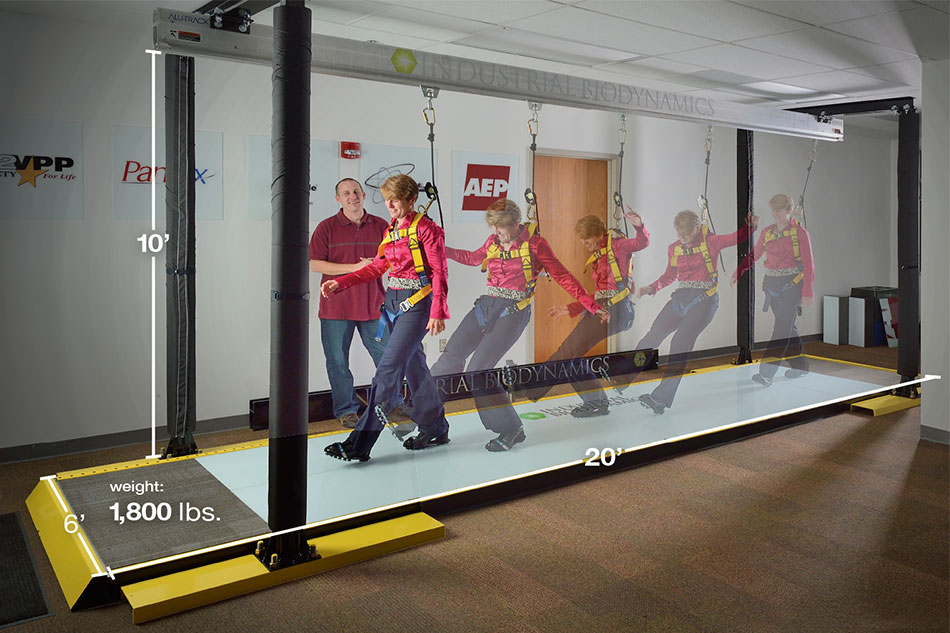
One million Americans slip, trip, or fall every year, costing employers an average of $40,000 per incident and accounting for 20 percent of all job-related injuries and 15 percent of all accidental deaths—about 20,000 people annually, according to Triumvirate Environmental. The Industrial Biodynamics simulator, whose tempered glass surface can be made slicker using water, helps trainees become more aware of the potential for falling, which can reduce accident rates. Trainees wear sandals with Teflon nodules mounted on the soles.
Falling down on the job
by Mason Adams
A slip-and-fall simulator developed at the Virginia Tech Grado Department of Industrial and Systems Engineering is helping a variety of industries reduce a leading cause of workplace injuries.
Developed by a team that included Thurmon Lockhart, a former Virginia Tech associate professor now at Arizona State University, the simulator allows workers to receive kinesthetic training—learning by doing—to discover the right technique to best avoid falls.
In 2013, Lockhart joined three Virginia Tech alumni—Mike Abbott (mechanical engineering '96, M.S. '00), Jon Hager (M.S. mechanical engineering '89), and Christian James (mechanical engineering '04, M.S. '06)—to form Industrial Biodynamics, based at the Virginia Tech Corporate Research Center, to manufacture the simulators. Operations began in 2014, and clients are already reporting 60 to 80 percent reductions in accident rates.
The company provides customized training to its clients. For example, the security team at Los Alamos National Lab practiced drawing firearms while standing on the simulator, which led to a change in how they wear the weapons. And workers for BP Husky Refinery practiced stepping over pipes and turning large valves.
Most people lean forward when they walk, but in slick conditions that tendency leads to imbalance. On the simulator, trainees can fall without fear of injury while practicing the proper technique: stand up straight, head held back, chin up, and eyes down. Take smaller steps, and land on a flat foot instead of on the heel.
After mastering the initial technique, trainees face additional challenges related to their specific work environments, such as walking up a ramp or turning a wheel.
Around the Drillfield
- Athletics
- Corps of Cadets
- How Tech Ticks
- Infographic
- List
- Moment
- News
- Ology
- Philanthropy
- Question
- What's In It?